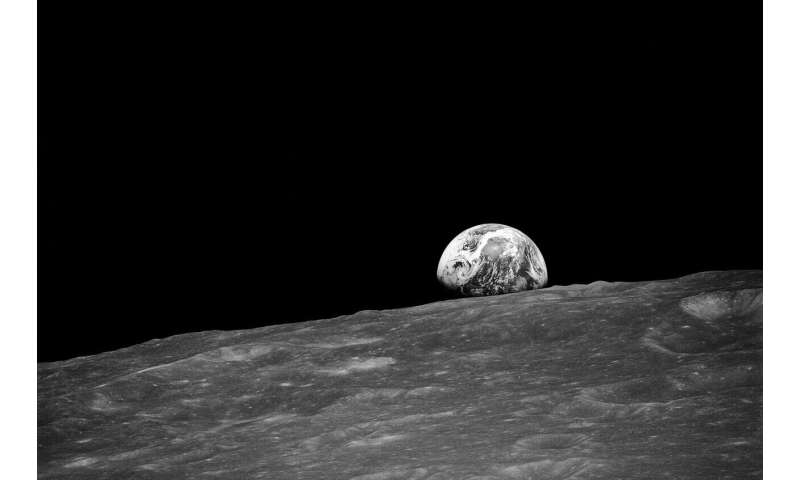Data from Yutu-2 suggests top layer of lunar regolith is material thrown from nearby crater
by Bob Yirka
A team of researchers has found evidence suggesting that the regolith material on which the Chinese rover Yutu-2 is situated consists mainly of material that was thrown there when an asteroid struck the moon nearby. In their paper published in the journal Nature Astronomy, the group describes their analyses of data sent back by the rover and what they learned from it.
Back in late 2018, China made history by launching a probe to the far side of the moon, which subsequently released a lunar rover called Yutu-2 after it landed in January 2019. The landing site was the Von Karman Crater in the South Pole-Aitken Basin—believed to be the largest and oldest impact structure on the moon's surface. The rover was equipped with ground-penetrating radar that has been used to learn more about the materials that make up the lunar regolith.
Data from the radar showed that the materials around the rover matched those associated with the nearby Finsen impact crater. This suggested very strongly that the regolith material in the vicinity of the rover arrived there after being ejected from the crater as it was struck by an asteroid. This finding by the Chinese team showed that the material making up the regolith did not come from a volcanic source as some had predicted.
The researchers note that the far side of the moon is very different from the side that faces us. It has far more hills, craters, and crevasses, and the craters are much deeper. Previous research has also shown that the far side of the moon is heavier than the flat side facing us. The researchers suggest that the findings by Yutu-2 are already helping to better understand the geology of the far side of the moon (and in particular the South Pole-Aitken basin), as compared to the near side. They suggest going forward that data from Yutu-2 will help scientists better understand the history of the moon in general as more is revealed about the role asteroid strikes have played in molding the surface to its current form.
More information: Jinhai Zhang et al. Lunar regolith and substructure at Chang'E-4 landing site in South Pole–Aitken basin, Nature Astronomy (2020). DOI: 10.1038/s41550-020-1197-x
Journal information: Nature Astronomy
© 2020 Science X Network